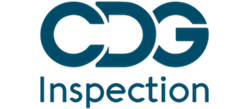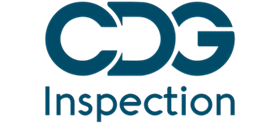Introduction:
In the pharmaceutical industry, maintaining high standards of product quality and patient safety is of utmost importance. Good Manufacturing Practices (GMP) regulations, particularly in the European Union (EU), play a critical role in ensuring that pharmaceutical manufacturing processes are in compliance with established quality standards. One essential aspect of GMP is the control of environmental monitoring and cleanroom practices. This article delves into the evaluation of these practices during EU GMP audits, exploring the key components, methodologies, and significance of these evaluations in ensuring product quality and patient safety.
Environmental Monitoring and Cleanroom Practices: An Overview:
Environmental monitoring refers to the systematic process of assessing and controlling the cleanliness and environmental conditions within cleanrooms and controlled environments. Cleanrooms are specialized spaces designed to maintain low levels of particulates and microorganisms in order to prevent contamination of pharmaceutical products. Contaminants in the manufacturing environment can significantly impact product quality, efficacy, and safety.
Cleanroom practices encompass a wide range of activities and controls, including personnel gowning, cleaning procedures, air filtration systems, temperature and humidity controls, and more. The objective is to create and maintain a controlled environment that minimizes the risk of introducing contaminants during the manufacturing process.
EU GMP Audits: Purpose and Scope:
EU GMP audits are conducted to ensure that pharmaceutical manufacturing facilities comply with established regulations and standards. These audits are performed by competent authorities or regulatory bodies to assess the facility’s adherence to GMP principles. The audits aim to identify any deficiencies or non-compliance issues in various aspects of manufacturing, including facility design, equipment qualification, process validation, documentation, and environmental controls.
Environmental monitoring and cleanroom practices are critical components of EU GMP audits because they directly impact the quality, safety, and efficacy of pharmaceutical products. Auditors thoroughly assess these practices to ensure that the manufacturing environment is well-maintained and contamination risks are minimized.
Evaluation of Environmental Monitoring:
During EU GMP audits, environmental monitoring is evaluated through a systematic approach that includes various aspects:
- Sampling Locations: Auditors assess whether the facility has identified critical sampling locations within cleanrooms and controlled environments. These locations are strategically chosen to represent the areas most susceptible to contamination. Regular monitoring at these locations helps detect trends and potential issues.
- Sampling Frequency: The frequency of environmental monitoring is evaluated to determine if it aligns with regulatory requirements and industry best practices. Monitoring frequency is based on factors such as the cleanroom classification, product type, and historical data.
- Microbiological and Particulate Monitoring: Auditors examine the methods and techniques used for microbiological and particulate monitoring. This includes assessing the suitability of the sampling methods, media, incubation conditions, and microbial identification procedures.
- Action Levels and Alert Limits: Facilities establish action levels and alert limits that trigger corrective actions when exceeded. Auditors assess the rationale behind these limits and the effectiveness of the facility’s response to deviations.
- Data Integrity and Trend Analysis: Accurate and reliable data recording is crucial in environmental monitoring. Auditors review data integrity practices and the facility’s ability to analyze trends and take proactive measures to prevent potential issues.
- Investigation and Corrective Actions: The facility’s approach to investigating environmental excursions and implementing corrective actions is thoroughly evaluated. Auditors assess the adequacy of root cause analysis, impact assessments, and effectiveness of corrective and preventive actions.
Evaluation of Cleanroom Practices:
Cleanroom practices are evaluated in conjunction with environmental monitoring to ensure the integrity of the controlled environment:
- Gowning Procedures: Auditors assess the gowning procedures followed by personnel entering cleanrooms. This includes evaluating the appropriate use of gowns, gloves, masks, and other protective clothing to prevent contamination.
- Cleaning and Disinfection: The facility’s cleaning and disinfection procedures are reviewed to ensure they are suitable for maintaining the required cleanliness levels. Auditors examine cleaning agents, frequency of cleaning, and validation of cleaning processes.
- Aseptic Techniques: For facilities involved in aseptic manufacturing, auditors evaluate aseptic techniques employed by operators during critical operations. This includes assessing the training provided to personnel and their adherence to established procedures.
- Air Filtration and HVAC Systems: The efficiency of air filtration and Heating, Ventilation, and Air Conditioning (HVAC) systems is examined. Auditors verify the regular maintenance, qualification, and monitoring of these systems to ensure the appropriate air quality within cleanrooms.
- Material Flow and Segregation: Auditors assess the facility’s material flow and segregation practices to prevent cross-contamination. This includes evaluating the separation of materials, equipment, and personnel to minimize contamination risks.
- Equipment Maintenance: The maintenance and qualification of equipment used in cleanrooms are evaluated. This ensures that equipment does not contribute to contamination and operates within specified parameters.
Significance of Evaluation:
The rigorous evaluation of environmental monitoring and cleanroom practices during EU GMP audits serves several crucial purposes:
- Patient Safety: Ensuring the quality and safety of pharmaceutical products is paramount. Effective environmental monitoring and cleanroom practices minimize the risk of contamination, which could otherwise lead to compromised patient safety.
- Product Quality: Contaminants introduced during manufacturing can impact the quality and efficacy of pharmaceutical products. By evaluating and maintaining stringent environmental controls, product quality is upheld.
- Regulatory Compliance: EU GMP regulations mandate compliance with established standards. Thorough evaluation of environmental monitoring and cleanroom practices ensures that facilities adhere to these regulations, reducing the likelihood of regulatory actions.
- Continuous Improvement: Audits provide an opportunity for facilities to identify areas for improvement in their environmental monitoring and cleanroom practices. Implementing corrective actions based on audit findings enhances overall manufacturing processes.
- Data-Driven Decision-Making: Trend analysis from environmental monitoring data enables data-driven decision-making. Auditors assess the facility’s ability to analyze trends and take proactive measures to prevent potential issues.
- Risk Mitigation: By identifying and addressing potential sources of contamination, facilities reduce the risk of batch failures, recalls, and product shortages, ultimately mitigating financial and reputational risks.
Conclusion:
The evaluation of environmental monitoring and cleanroom practices during EU GMP audits is a comprehensive and critical process that safeguards the quality, safety, and efficacy of pharmaceutical products. Through a systematic assessment of various aspects, auditors ensure that manufacturing facilities adhere to established standards and regulations. This not only maintains patient safety but also upholds the reputation of the pharmaceutical industry as a whole. The continuous improvement driven by audit findings contributes to the advancement of pharmaceutical manufacturing practices and the pursuit of excellence in quality assurance.





